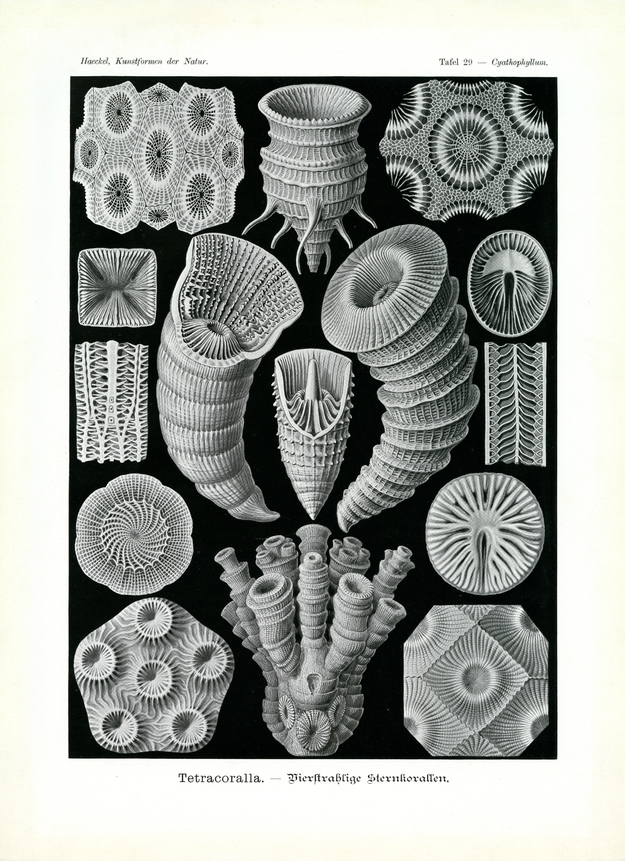Translation of the original German introduction by Ernst Haeckel:
Phylum of Cnidaria (Nesseltiere); - subclass of Anthozoa (Korallen); - legion of Zoantharia (Sternkorallen); - order of Tetracoralla (vierstrahlige Sternkorallen).
Illustrations of this plate present in original size (partly with slight enlargement) the solid, inner lime structures of four-jetted ‘star corals’ (Tetracoralla). This highly variable order of the coral subclass dwelled in Palaeozoic oceans many millions of years ago during the Siluric, Devonic and Carbonic periods. During the following Permic period (or in the Triassic period at the latest) these four-jetted star corals became completely extinct and got replaced by the six-jetted (plate 9). While in the latter the body of an individual coral is composed of six homogenous jet-parts (or Parameres) only four are present in the Tetracoralla (at times evenly, fig. 3, 4 and 13, at times bilaterally structured, fig. 5 and 11). Many Tetracoralla live isolated, as individual personae (fig. 1, 6-8), others form colonies or Corma (fig. 2, 13-15) through budding. The finest individual proportions of the body structure are preserved in the lime skeletons of petrified Tetracoralla illustrated here and as easily visible as in the lime structures of living corals with soft parts removed (plate 9).
Translation by VR Translators Bangalore
We've scanned the original lithography at 1200dpi on the Epson A3 scanner of A3 scanner huren. You can download a 400dpi JPEG here.
